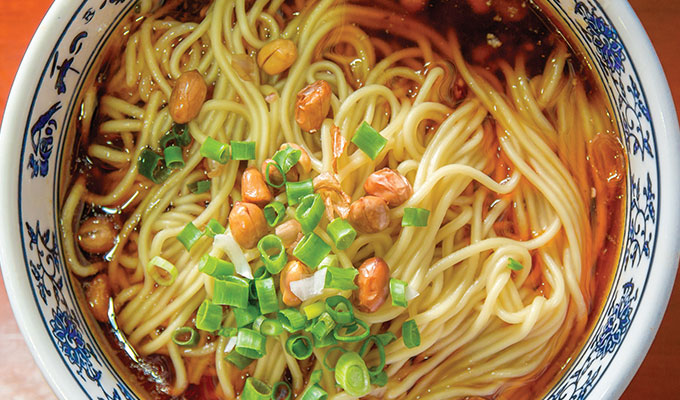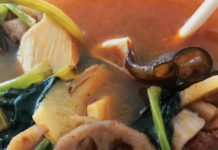Xi’an, meaning “Western Peace”; the first of China’s four great capitals and what remains the country’s noodle mecca. Known as Chang’an during the Tang Dynasty, it became the gateway for travellers of the Silk Road, whom came baring foreign objects for trade with the Chinese, returning through the Middle East and finally to Europe, where the much-sought-after Eastern valuables were sold.
Examples of traded goods brought to China from the west included exotic fruits such as watermelon, which became “xi gua” (西瓜), literally meaning “Western melon”. Traded out of China at the time typically were silk, and among many other products, porcelain, which became known as… China. However, historians seem undecided as to the origins of the Eastern and Western much-loved stringy carbohydrate known as noodles and pasta. Foodies on both sides insist the noodle or pasta was indeed invented by them.
The word “noodle” comes from the German word “nudel”, but in Chinese it is “mian” (面); where and when the English-cum-German adaptation of the word came about, we do not know. In Europe the word “pasta” is derived from the Greek “pastos”, meaning dough sprinkled with salt.
The Marco Polo legend that he brought pasta to Rome from China does not ring true, as he supposedly came to China in 1295, but as early as 1279, dried pasta had already been recorded by a Genoese soldier as stock on one of his ships. With Turkey as the gateway to Europe from the East, food such as eggplant reached the Mediterranean; people argue this is also how pasta comes in the form of Middle Eastern noodles.
“Middle Eastern noodles, which developed after the fifth century, most likely influenced Europe”, said Chinese-American food writer Lin Liu, originally quoted in a 2017 article for Australian broadcaster SBS, who travelled for 6 months from China to Italy in her quest to answer this very question.
“Based on my journey, it seems that Chinese noodles made their way throughout Asia, Korea and Japan, all through Central Asia and then through to Turkey. It makes sense as that was the way migration patterns moved and trading routes went.”
Polo writes, in his Macaroni Journal, that he witnessed something during his time in the Chinese kingdom that resembled Lasgana, which during his time was Sicily’s 1st Century “fine sheets of fried dough”. Furthermore, a major discovery in Lajia, in China’s Northwestern Qinghai province, revealed a 4,000 year-old bowl of noodles buried at an archeological site.
It seems the simple answer is that, while the earliest findings of noodles were indeed in China, it remains unknown whether or not the Italians ipso facto created the same thing at the same time, on the other side of the world. Whether it migrated from China, was adapted in the Middle East and ended up flourishing in Italy, we will probably never know.
While now found in dishes all over the world, in China it there are virtually no limits to the types of noodles we can find. Since this style of fashioning flour and water has been evolving in China over the past 4,000 years, the sheer quantity of its varieties is hardly surprising. Mainly hailing from the north, the Chinese will eat noodles for breakfast and lunch, and as a filler at dinner or if they have a stomach ache!
The following is a handful of the most common types of noodles to be found here in China today:
- Tang Mian (汤面); Soup Noodles
- Chao Mian (炒面); Fried Noodles
- La Mian (拉面); Pulled Noodles
- Chao Ma Shi (炒麻食); fried gnocchi-like Noodles
- Mi Xian (米线); Rice Noodles
- Fen Si (粉丝面); Glass Noodles
- Bo Cai Mian (菠菜面); Spinach Noodles













